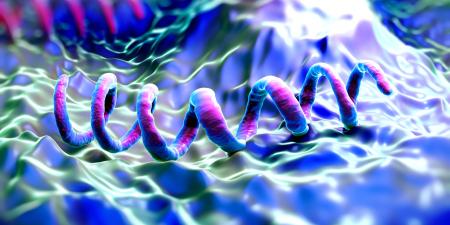The recent American Academy of Pediatrics (AAP) Clinical Report, "Adolescent Pregnancy: Current Trends and Issues,"1 fails to consider the complete emotional and physical complexity that is adolescence and, as a result, advocates a clinical approach that can be harmful. To understand how to correctly address sexuality and the adolescent in the clinical setting, physicians must take a broader view than what is advocated in this flawed report.
The report makes the mistake that has marred the approach to adolescent sexual activity for 3 decades—an abhorrence of taking a position on the healthiest sexual behavior. I am not advocating that clinicians render medical advice based on their moral judgment. However, when the data are abundant and clear that a certain behavior is unhealthy or harmful, then telling the patient he or she should avoid such a behavior is not a moral judgment.
For example, every clinician would tell an adolescent not to smoke, not because of the clinician's moral sensitivities but because smoking is unhealthy. As this paper will argue, the same is true for adolescent sexual activity; it is unhealthy behavior, and, thus, every clinician should instruct adolescent patients to avoid it.
Unfortunately, the AAP clinical report refuses to advocate such a risk avoidance stance because walking the middle ground and taking no stance on whether adolescents should remain abstinent is both politically neutral and politically easy. Unfortunately, this is unacceptable—clinicians are required to instruct their patients on what is healthy. In this case, only avoiding sexual activity during adolescence is healthy.
The Case for Abstinence for Adolescents
Adolescence starts at puberty and ends with the final maturity of the prefrontal cortex, roughly in the mid-twenties. The AAP clinical report presents pregnancy as the major risk of sexual activity during this period of time, ignoring the impact of sexual activity on the social, emotional, and physical development of adolescents. Beyond the risk of pregnancy or fathering a child, sexual activity is dangerous behavior for people of this age. Consider, for example, the epidemic of sexually transmitted diseases (STDs):
- More than 60 million Americans are currently infected with an STD, and about 19 million new cases occur every year. One quarter of these new STD infections occur in people between 15 and 19, and half occur in those under the age of 25.2
- Human papillomavirus (HPV) is 1 of the most common STDs in the United States. In one recent study, about 50 percent of sexually active 14- to 17-year-old women were infected with HPV.3 HPV is the cause of 99 percent of cervical cancer cases and 99 percent of precancerous pap smears. This cancer is responsible for approximately as many deaths among women every year in this country as is AIDS.4,5
- Even 100 percent consistent and correct use of condoms (which is uncommon, especially among adolescents) at best reduces but does not eliminate the risk of STDs. There is virtually no evidence that condoms reduce the risk of HPV, though they may somewhat decrease the number of people who develop warts or cervical cancer.6
- One hundred percent consistent use of condoms only reduces the risk of chlamydial and gonorrheal infection by about half. Approximately
700 000 new cases of infection caused by Chlamydia and 360 000 cases of gonorrhea are reported yearly in the US.2 Reports show that approximately 10 percent of sexually active adolescent females are infected with Chlamydia, a leading cause of infertility.
Social and Emotional Consequences for Teens
Focusing only on the physical consequences of sexual behavior for adolescents, a mistake made by the AAP clinical report, can be harmful because it neglects serious negative social and emotional consequences. For example, an analysis of the National Longitudinal Survey on Adolescent Health (Add Health), the largest data set examining adolescent behaviors, reveals that sexually active adolescents, both boys and girls, are far more likely to be depressed and to attempt suicide than youth who are still virgins. A quarter (25.3 percent) of adolescent girls who are sexually active report being depressed all, most, or a lot of the time, compared to only 7.7 percent of girls who are not. Among boys, 8.3 percent who are sexually active say they are depressed all, most, or a lot of the time, while only 3.4 percent of adolescent boys who are not sexually active report the same.7
The same data reveal that 14.3 percent of girls who are sexually active report having attempted suicide, compared to 5.1 percent of teenage girls who are not. Six percent of adolescent boys who are sexually active report having attempted suicide, compared to just 0.7 percent of boys who are not sexually active.7 Even when the researchers controlled for background variables, the differences remain. "When teens were compared to other teens who were identical in gender, race, age, and family income, those who were sexually active were significantly more likely to be depressed and to attempt suicide than were those who were not sexually active," the researchers write.2
Furthermore, sexually active adolescents themselves report that they wished they had waited until they were older before commencing sexual activity. A poll by the National Campaign to Prevent Teen Pregnancy asked teens, "If you have had sexual intercourse, do you wish you had waited longer?" Nearly two-thirds of those who said they had engaged in sexual intercourse reported that they wished they had waited longer before becoming sexually active.8
Married Adolescents
These risks are not the same for married adolescents. Data at the population level, by researchers in the book Sex in America, shows that most people do not have sex outside marriage, which is a highly protective behavior against STDs.9 Married adolescents avoid new STD risk when they are faithful in a marriage with an uninfected partner.
The Correct Clinical Response
Many adults who could influence the behavioral choices of adolescents (parents, educators, doctors) wrongly assume that they can have little, if any, impact on a teenager's decision to become sexually active. Too many adults simply assume the inevitability of adolescent sex. Indeed, the AAP clinical report seems to be based on this assumption. This is an unfortunate, actually tragic, abdication of responsibility to America's adolescents.
The fact of the matter is that adolescent sexual activity is not inevitable. Parents and other adults can have great influence on the decision an adolescent makes regarding if and when to become sexually active. It is appropriate and necessary that they do so.
Analysis of the Add Health data reveal that teenagers are more likely to avoid sexual activity if they experience a high level of parent-family "connectedness" and if their parents express disapproval of their becoming sexually active.11
The majority of adolescents today are virgins. According to the Centers for Disease Control and Prevention (CDC),10 53.3 percent of high school students have never had sexual intercourse. This is a reversal of the data from approximately a decade ago.
Role of the Pediatrician
Pediatricians have a responsibility to discuss sexuality with adolescent patients in a way that addresses its physical, social, and emotional consequences. The pediatrician must ensure that patients understand all of the risks of engaging in sexual behavior at their age, including but not limited to the risks of STDs, pregnancy, and negative emotional feelings and states. This includes understanding the limits of condom effectiveness in preventing the spread of STDs. But data clearly shows that information alone does not change behavior.
Pediatricians should help their adolescent patients understand normative age-appropriate behavior when it comes to sex. Popular culture, especially the media, too often presents an "everybody is doing it" picture of adolescents and sex, leading teenagers to conclude that normative behavior for them and their peers is to engage in sexual intercourse. Relying on such sources as the CDC, pediatricians can help adolescents understand that, contrary to popular misconception, choosing to postpone sexual activity until later is normative and is necessary behavior for the healthiest future.
Finally, pediatricians can help parents of adolescents understand that they can have great influence upon their children's choices when it comes to risky behaviors, including and especially sex. Too many parents, either because they don't know how to be involved or don't realize they can make a difference, fail to adequately express their expectations to their adolescent children. Pediatricians should make sure that the parents of all of their adolescent patients are equipped to talk to their children about sex, especially telling their children that they disapprove of sex during adolescence.
References
-
Klein JD, Committee on Adolescence. Adolescent pregnancy: current trends and issues. Pediatrics. 2005;116:281-286. Available at: http://pediatrics.aappublications.org/cgi/reprint/116/1/281. Accessed August 30, 2005.
-
Weinstoc.pdf. Accessed August 30, 2005.
- Brown DR, Shew ML, Qadadri B, et al. A longitudinal study of genital human papillomavirus infection in a cohort of closely followed adolescent women. J Infect Dis. 2005;191(2):182-192.
-
American Cancer Society. Cancer Facts and Figures 2005. Atlanta, Ga: American Cancer Society; 2005. Available at: http://www.cancer.org/downloads/STT/CAFF2005f4PWSecured.pdf. Accessed August 30, 2005.
-
Centers for Disease Control and Prevention. HIV/AIDS Surveillance Report, 2003. Atlanta, GA: Centers for Disease Control and Prevention, US Department of Health and Human Services; 2003:15. Available at: http:www.cdc.gov/hiv/stats/2003SurveillanceReport.pdf. Accessed August 30, 2005.
- Manhart LE, Koutsky LA. Do condoms prevent genital HPV infection, external genital warts, or cervical neoplasia? A meta-analysis. Sex Transm Dis. 2002;29(11):725-735.
-
Rector RE, Johnson KA, Noyes LR. Sexually Active Teenagers Are More Likely to Be Depressed and to Attempt Suicide. Washington, DC: The Heritage Foundation; 2003. Center for Data Analysis Report 03-04. Available at: http://www.heritage.org/Research/Family/cda0304.cfm. Accessed August 30, 2005.
-
National Campaign to Prevent Teen Pregnancy. With One Voice 2003: America's Adults and Teens Sound Off About Teen Pregnancy.Washington, DC: National Campaign to Prevent Teen Pregnancy; 2003. Available at: http://www.teenpregnancy.org/resources/data/pdf/wov2003.pdf. Accessed August 30, 2005.
-
Kolata G, Laumann E, Michael RT. Sex in America: A Definitive Survey. Boston, Mass: Warner Books; 1994.
-
Centers for Disease Control and Prevention. Youth risk behavior surveillance—United States, 2003. MMWR Surveill Summ. 2004 Jul 23;53(SS-2). Available at: http://www.cdc.gov/mmwr/PDF/SS/SS5302.pdf. Accessed August 30, 2005.
- Resnick MD, Bearman PS, Blum RW, et al. Protecting adolescents from harm: findings from the national longitudinal study on adolescent health. JAMA. 1997;278(10):823-832.



